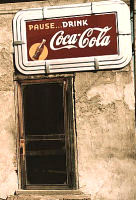American Experience: Surviving the Dust Bowl
From PBS:
In 1931 the rains stopped and the "black blizzards" began. Less well-known than those who sought refuge in California, typified by the Joad family in John Steinbeck's The Grapes of Wrath, the Dust Bowlers stayed and overcame almost a decade of unbelievable calamities and disasters, enduring drought, dust, disease—even death—determined to preserve their way of life.
This American Experience documentary looks at the lives of those who fought through the Dust Bowl years.
